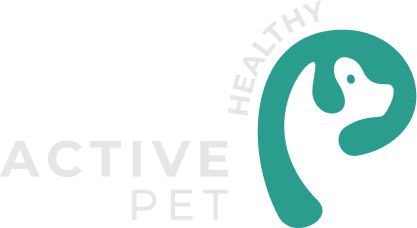
Why good nutrition is important
Good nutrition is as important to our pets as it is to us as humans . We are what we eat and if we don’t eat well it can lead to weight gain and long term health issues .
But the pet food industry is dominated by pet food manufacturers who don’t create and sell pet food that is healthy or nutritionally dense . Instead they are often motivated by making profits and are mass producing dog and cat food that could in fact be doing harm to your furry friend
In order for thriving health to occur, all living things must consume the foods they were designed to eat . This is known as species-appropriate nutrition .
Dogs and cats, like humans, are more resilient and can eat a number of things their bodies were not designed to eat . However, their health and vitality suffers .
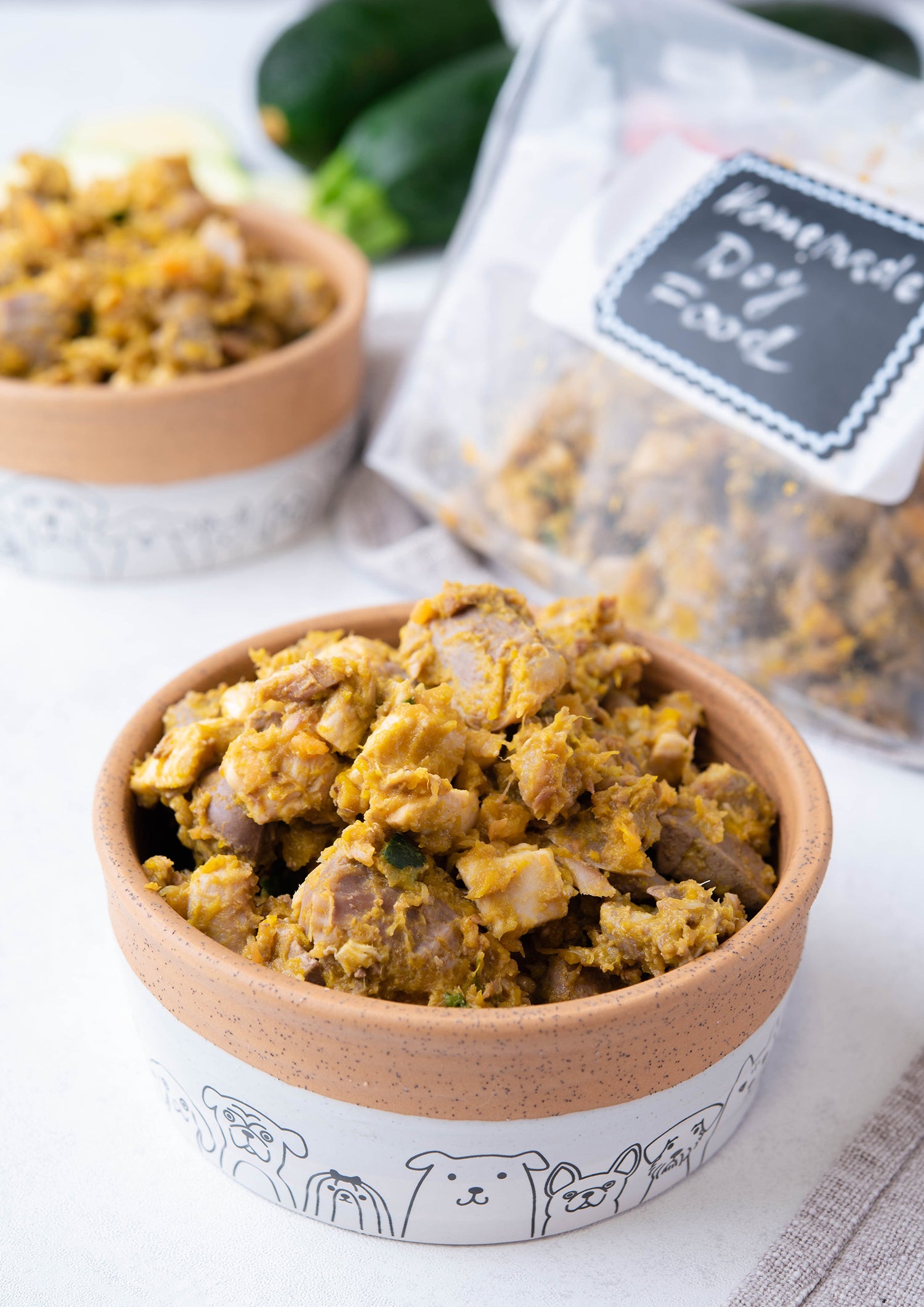
What's in commercial pet food?
Have you ever picked up a bag of dog or cat food and seen "Meat by-products and meat (poultry, beef &/or sheep)” or words to that effect? What does that even mean?
Chances are it means the manufacturer doesn’t actually know which one is in their food.
Heavily processed pet food like kibbles and tinned dog and cat products are almost always made from meat that has either been rendered to a shelf stable powder, or otherwise processed to a meat “slurry” that is then sterilised. Rendering is a process favoured by the fertiliser industry, whereby meat and bones that are not fit for human consumption are crushed and then heated to very high temperatures until the water and fat separate. The remaining “meat” is dried to a long life powder that contains mostly protein and bone, and then turned into garden fertiliser, dry dog food and livestock feed.
Some tinned pet foods also use these meat meals, while others grind whole meat and meat by-products (which may include heads, hooves, offal and basically any part of the animal that is otherwise discarded), and then add cereals and other binding ingredients to form the chunks in a tin that we might mistake for actual pieces of meat. These ingredients are then cooked so the starches gelatinise and proteins begin to denature, before being tinned and sterilised using temperatures over 120 degrees Celsius for several minutes. These products are basically always synthesised with vitamin and mineral supplements, because very little nutrition survives these heat intensive processes.
Because these meats are pretty much always not of a quality fit for human consumption, prior to being turned into pet food they are regulated by a different set of rules to food intended for the human supply chain. These rules don’t require that meat be properly labelled as “beef” or “sheep,” which is why pet food manufacturers don’t always seem to know which one is in their food. There are of course brands that do name their meats, and we can only give them the benefit of the doubt that this is because their sourcing ensures these claims are accurate, but the intensive processing methods remain the same, meaning that nutritionally there is very little difference between them by that point anyway.
Another thing you will see in pretty much all processed pet foods is high levels of carbohydrate ingredients. These may be mysterious “cereals” in cheaper brands (usually wheat, corn, soy or some combination of all three), or things like brown rice, peas, lentils, chickpeas, tapioca, potato, sorghum and beet pulp in the higher end brands. These may sound ok, probably because we know these whole foods are nutritious additions to our own diet. But dogs and cats have no nutritional need for carbohydrates, and these are not actually present in their whole food form like the pretty pictures on the label might suggest; they are ground down to highly refined starchy powders that act as fillers and binders, without which these product would not hold together. They also often appear spread across multiple different ingredients (a practice known as ingredient splitting), which serves to conceal that many processed dog and cat foods are upwards of 50% carbohydrates.
For animals that don’t need any carbs in their diet, that’s a whole lot of carbs!
The best way to avoid these mystery meats and processed cereals is to feed your four-legged friend a whole food diet, either in the form of homemade food using the same nutritious ingredients you would eat yourself, or a reputable pre-made food that has been minimally processed and is clearly labelled with everything it contains.
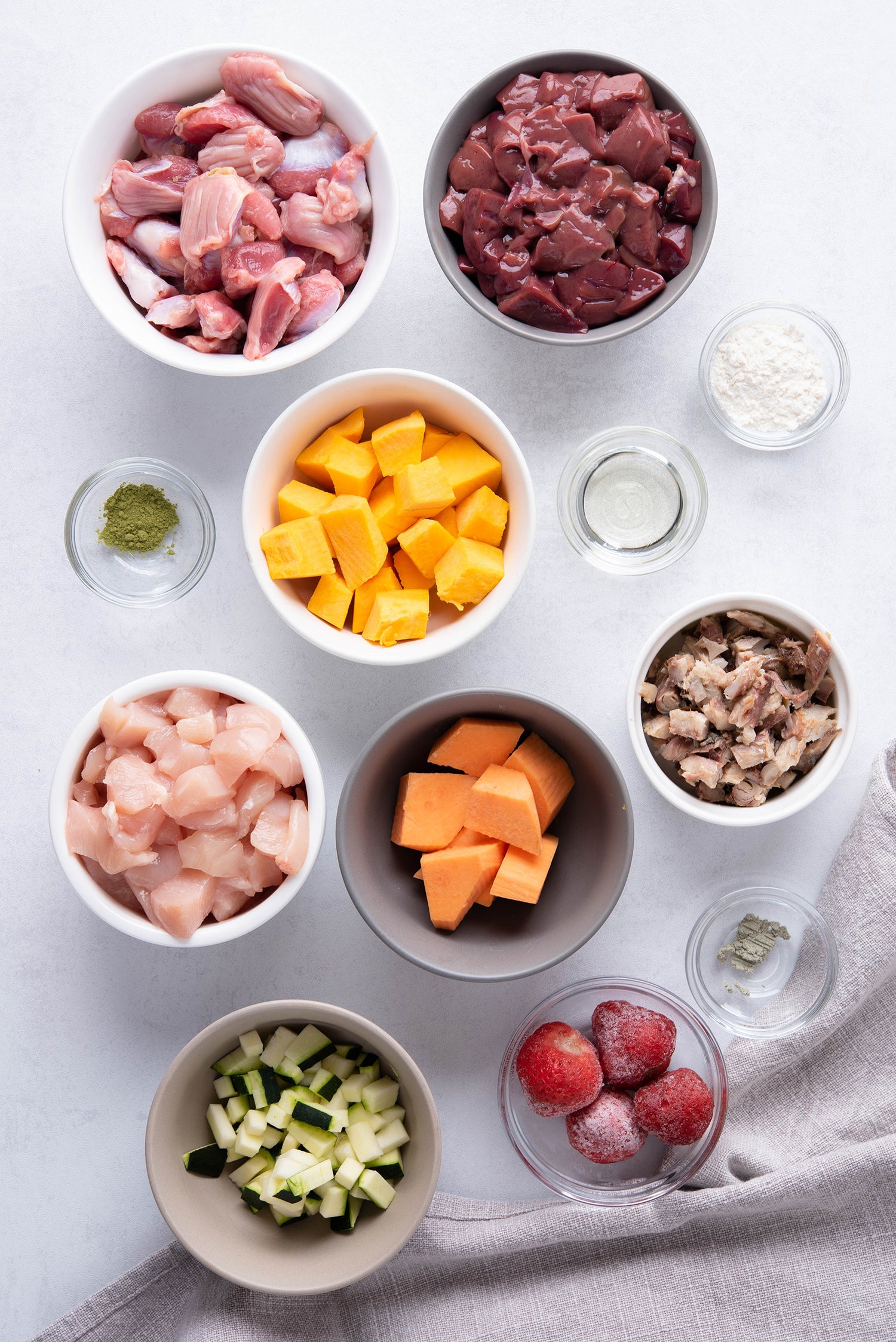
Why raw feeding?
Pretty much everything we know about healthy eating and weight management tells us that we should eat as much fresh, unprocessed food as possible, while avoiding things like refined sugars, simple carbs and heavily processed foods .
Common sense says this approach should also apply to our animals, especially if they need to drop a few kilos – but it’s also founded in evidence.
In 2020 the University of Florida conducted a large survey that clearly found dogs eating a processed dry or canned diet were more likely to be overweight or obese than those eating fresh foods, such as home cooked or commercial raw food4 .
Perhaps even more significantly, researchers at a teaching veterinary school in Finland found that dogs fed raw food have lower levels of inflammation and disease markers, regardless of whether they are overweight or not.
This is troubling for the dogs eating processed food because chronic inflammation is widely understood to be a precursor to a vast number of diseases .
A New Zealand study published in 2017 found a clear link between gut microbiome diversity with intestinal health.
It also found that kibble fed dogs had increased levels of bacteria associated with diarrhoea and irritable bowel, whereas the raw fed dogs in the study experienced greater gut microbiome diversity and improved nutrient digestibility.
The makeup of the microbiome is critically important to overall health, given that as much as 70-80% of the immune system cells are thought to reside in the gut.
Despite all of this, commercial weight loss foods are still brimming with heavily processed carbohydrates and typically achieve their lower calorie density with the addition of large amounts of indigestible fibre.
They often cost the earth, don’t work and cause insulin to spike (which may lead to weight gain), leaving your dog hungrier than ever and maybe even poorly nourished due to the fibre’s ability to hinder nutrient absorption.
Any weight they do lose is likely to be muscle mass, rather than fat .
We believe a far better way to support your dog through their weight loss journey is to provide them with a nutrient dense, species appropriate diet that will not only help them maintain a healthy weight, but also support their gut health, fight oxidative stress and inflammation, keep them feeling full and satisfied, and potentially may even extend their life
Another key consideration that doesn’t get a lot of attention is water. Water is the most important nutrient any of us consume, but it is decidedly lacking from most commercial dog food.
A fresh diet will naturally keep your dog hydrated, as most of our water comes from our food. This will not only help your dog’s weight loss goals, but it will also improve their overall health and the health of their organs.
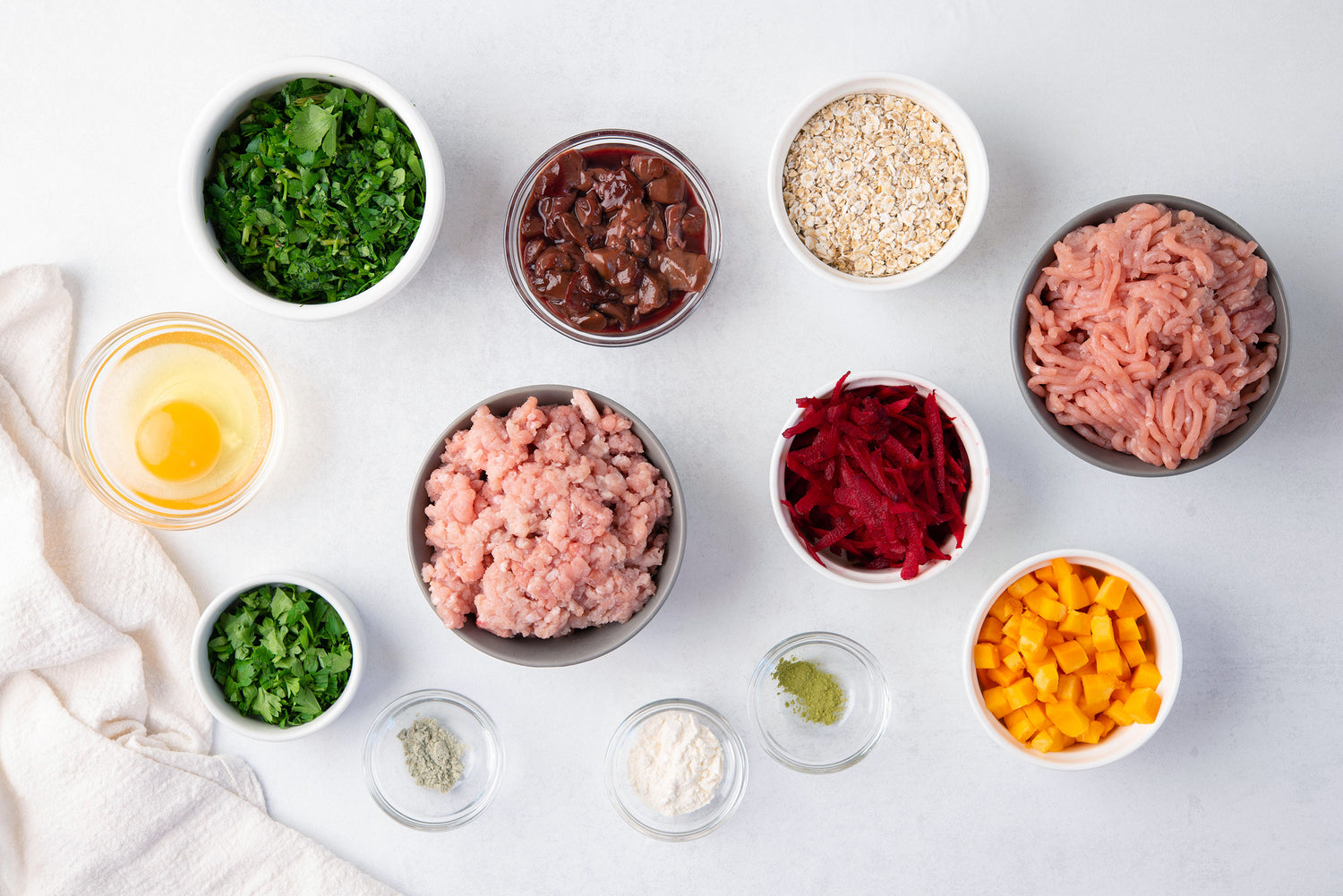
Raw & Home Feeding Recipes exclusive to Members
Healthy Active Pet Members get exclusive access to our catalog of recipes as well as instant access to new recipes added every month. You'll also get access to ALL health & wellness programs for all pets, 5% off all products and more!
Don't have time to make food?
Try our convenient air dried and freeze dried raw food.
100% natural, ethically sourced complete meals and treats.
-
Example product title
Regular price $19.99Regular priceUnit price per -
Example product title
Regular price $19.99Regular priceUnit price per -
Example product title
Regular price $19.99Regular priceUnit price per -
Example product title
Regular price $19.99Regular priceUnit price per

The benefits of slow feeding bowls
A slow feeding bowl is a dog food bowl or mat that has obstacles that the pup needs to get around to reach their food. They make your pet work out how to get to the food, so they work for it.
A slow feeding bowl can be shaped like a bowl, but there are also mats, balls and other shapes. They have ridges, nooks, lumps and bumps that your dog has to work around. They come in a variety of materials, from plastic and silicone to stainless steel.
Why use a slow feeder?
Complications can arise if your mutt eats too fast, particularly for large breeds. When devouring food, dogs can also ingest a large amount of air, causing many issues.
Slow feeders limit these issues and are also great for weight management as they take longer to eat.
-
Reduces choking
A slow feeder slows down the eating process, giving your dog time to chew properly before swallowing.
Slowing down also means your furry friend has less chance to choke on their food, or even vomit.
It also gives them time to digest their food properly. Nutrients are better assimilated, and throw-ups are less likely to happen.
-
Prevents Gastrointestinal Discomfort
Eating fast can lead your dog to pile too much food at once into their stomach and swallow a lot of air. This can cause gastrointestinal discomfort, gas, bloating and belching. Eating slower can help your pet with these problems.
-
Promotes Mental Stimulation
Many slow feeders are designed to make eating more of a challenge for your dog, by making it more difficult to access the food. This turns meal times into a kind of puzzle, providing mental stimulation for your dog.
More mental stimulation equals less boredom, which in turn means less problematic behaviour
Our slow feeding products
-
Example product title
Regular price $19.99Regular priceUnit price per -
Example product title
Regular price $19.99Regular priceUnit price per -
Example product title
Regular price $19.99Regular priceUnit price per -
Example product title
Regular price $19.99Regular priceUnit price per
How much exercise should my Dog be getting?
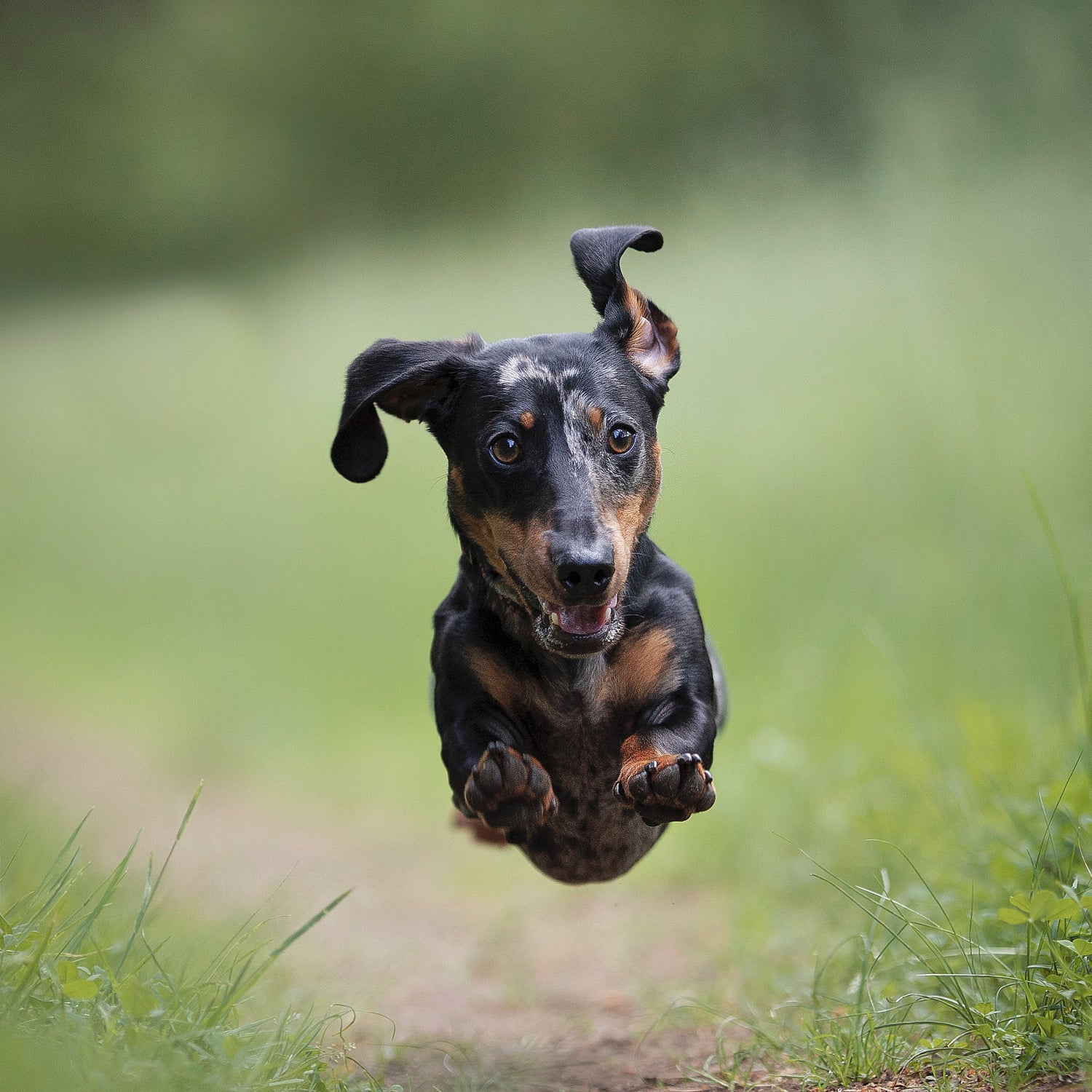
Exercise for Dogs
Providing a nutritious diet that supports your dog’s weight loss goals is a hugely important step towards ensuring their health and longevity, but we can’t forget about exercise . Just like for us, any endeavour to slim down will be more successful if it is paired with regular movement .
If your dog has become very sedentary, start gradually and work up to longer periods of activity . If they are capable, your dog should get at least 20 minutes of regular daily exercise in the form of a brisk walk or play at the dog park or beach . Ideally, they will be active for an hour a day if this is appropriate for them, which may be split into multiple outings if this works better for you (or them) .
For dogs, physical activity doesn’t just provide physical benefits, but also offers enormous mental benefits . Exercise doesn’t have to be intense either; interactive tasks like training, play, sniffing, chewing and problem solving all work out the body and the mind, resulting in positive outcomes for physical and mental health .
If you have a particularly active breed, you may find physical exercise alone is insufficient to wear your pup out – working dogs can run for hours without stopping but will be mentally challenged and tire from puzzles and intense chewing . This is because these activities release dopamine (the “reward” brain chemical) and have a calming effect.
Keep your pet active
-
Example product title
Regular price $19.99Regular priceUnit price per -
Example product title
Regular price $19.99Regular priceUnit price per -
Example product title
Regular price $19.99Regular priceUnit price per -
Example product title
Regular price $19.99Regular priceUnit price per

Want the best value? Become a member!
Get exclusive access to our catalog of recipes as well as instant access to new recipes added every month.
You'll also get access to ALL health & wellness programs for all pets, VIP access to sales and launches, and access to our private group with animal expert Q & A's.
We'll also give you 5% OFF everything just for being a member!
What are you waiting for?
